This post may contain affiliate links. As an Amazon Associate I earn from qualifying purchases. Please read our disclosure policy.
This Sous Vide Prime Rib is cooked to temperature-controlled perfection and makes the juciest, most flavorful, perfect roast for your holiday or special occasion. Whether this is for Christmas, Thanksgiving, Easter, or just a great family meal, a prime rib can help bring your friends and family together around a delicious meal.
We also include a beautiful horseradish sauce to go along with the star of the show, Sous Vide Prime Rib. Give this wonderful beef roast a try today.
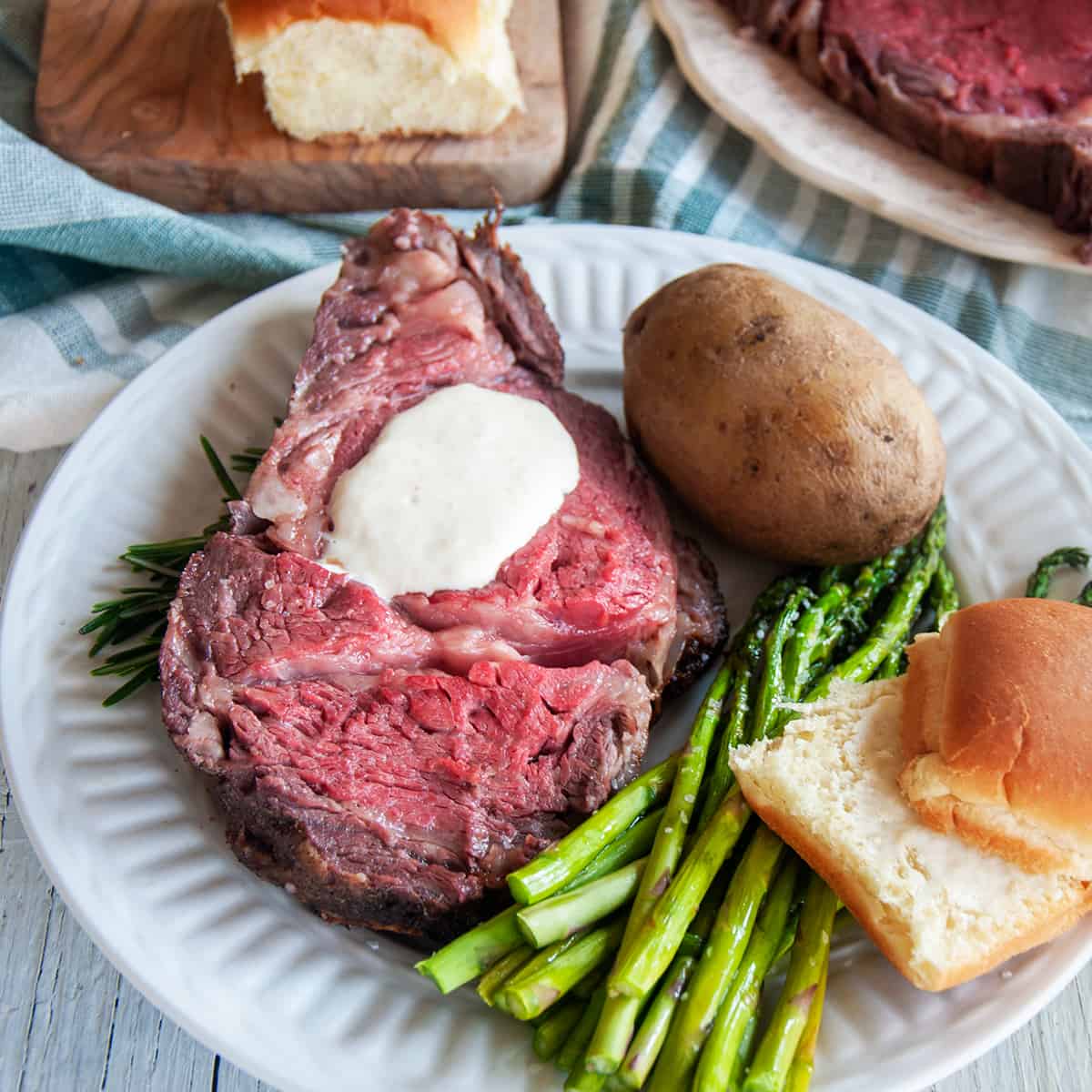
🥩 What makes this recipe special?
This recipe is special because it uses the sous vide cooking method, which results in a perfectly cooked prime rib with a tender and juicy texture. It is cooked in a precisely controlled water bath at a low temperature for an extended period.
The meat is evenly cooked from edge to edge with sous vide, resulting in a consistent and delicious flavor. Then, at the end, we give it a good sear in the oven to ensure you get a nice crust and tender insides.
Additionally, the horseradish sauce adds a zesty and tangy flavor to the dish, making it a perfect accompaniment to the rich and savory prime rib. The combination of the perfectly cooked prime rib and the flavorful horseradish sauce makes this recipe a standout dish for special occasions and dinner parties.
A few side dishes that would be perfect for this prime rib are this Best Mashed Potatoes recipe, this Amish Broccoli recipe, or this Traditional German Spaetzle recipe. Don’t forget some dessert with this American Apple Pie recipe. No matter what you make, make sure to treat yourself!
🧂 Ingredients
Prime Rib is the star of this one, but there are a few other ingredients that pull this together. Here is what you will need:
- Boneless prime rib (about 6lbs) roast
- Kosher salt
- Black Pepper
- Mayonnaise
- Sugar
- White vinegar
- Horseradish
See the recipe card for quantities.
What is a Prime Rib?
Are you familiar with the Ribeye steak? This is a bit of an oversimplification, but it is the same cut of meat, but served in roast form and not an individual steak.
Both are cuts of the cow that reside near the rib and usually are well marbled with fat. This helps make the cut tender and flavorful.
Unlike a ribeye steak, a prime rib usually comes with the bone, or at least that is a discussion if you are getting it from your butcher. A ribeye may have the bone, but is often just a small little cut of it, whereas in the prime rib, it will look like a rack and be a bit bigger.
For this recipe, we are using boneless because it can help create a better seal with the vacuum we want during sous vide cooking. I have done this with a bone-in roast, as well, but for both safety and a consistent product, I recommend boneless for this recipe.
🍲 Instructions
The beauty of this recipe is that it is mostly just waiting! Mis salt and pepper and coat your prime rib roast.
Use your sous vide cooking machine and a sous vide bag to cook this cut of meat. It will cook for 8 hours at 131° Fahrenheit.
Then, bake your roast at 500° Fahrenheit for 20 minutes. Finally, allow it to rest for fifteen minutes.
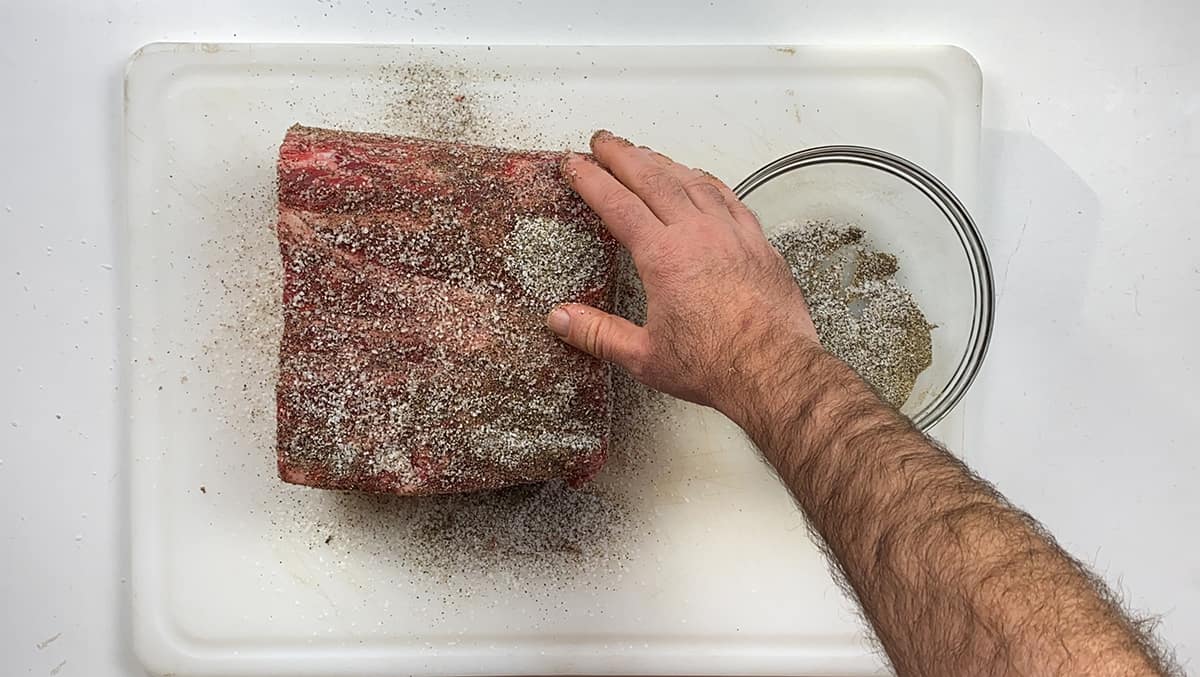
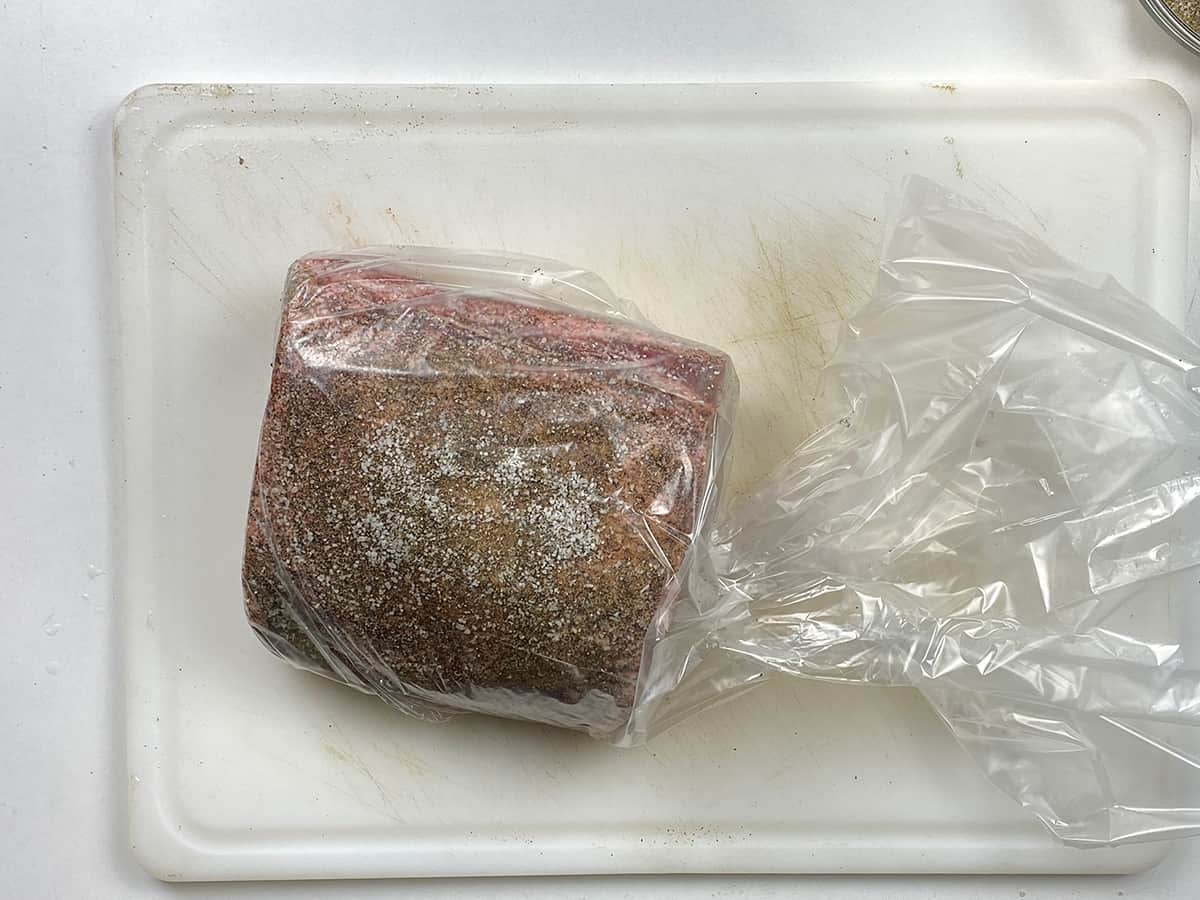

What is a Sous Vide cooking?
Sous Vide is a method of cooking where the food item being cooked is done at low temperatures. It is cooked in a vacuum seal, for long periods of time with an immersion circulator in a water bath.
Literally, the word translates to “Under Vacuum” in French and requires the use of a special Sous Vide cooker. These cookers are great, as you set it to a precise temperature and then place the sous vide cooker in a vat of water.
It cycles the water through the machine, bringing the temperature of the water to that precise temperature. Once you add your meat (or whatever it is you are cooking), it will be brought to that temperature and cooked for a long period of time.
Can you see the benefit of this cooking process? With high temperatures, the outside of a rost gets overcooked, but not done enough on the inside.
Let’s say you want to bring a hunk of beef to an exact medium-rare temperature (130° – 135° Fahrenheit), you can do that. If left to cook, it will bring the meat to the exact temperature; evenly, consistently, and all the way through.
Your oven might have one part that is slightly hotter than another or an uneven hunk of meat might cook at different rates. Sometimes, it is just hard to get a consistent, end to end, temperature. The sous vide solves that.
Cooking the meat over a long period of time at that temperature serves two purposes. First, it makes sure the entire cut of meat raises to that exact temperature. Second, cooking at these temperatures serves to tenderize the meat and make it nice and juicy. The fat and juices from the meat serve to act as a constant braise in the meat.
These cookers are completely reasonable in price now and if you like cooking, consider picking up a Sous Vide Machine (Affiliate Link). They are great for things like THIS Prime Rib recipe.
You can make a killer steak with it or use it for things like my Make-Ahead Mashed Potatoes recipe. If you love Southern food, you should check out this delicious Southern-Style Collard Greens recipe from my friend Kari over at Southern Bytes as a side dish.
Water displacement method vs machine method
When you find instructions online, you are going to find folks that have the full sous vide set up. A proper BPA-free plastic vat, specialized vacuum bags, and a vacuum machine that will remove all of the air from your roast or whatever you cooking.
True to this website’s name, Ramshackle Pantry, I am going to give you the method for doing it if you don’t have all of the specialized equipment. It is called the water displacement method.
We use displacement to create a vacuum. This involves putting your target in a bag and then submerging it in water.
Gravity does the work of helping air escape. There may be some bubbles trapped and you can actively work to help them escape, but if you have a well-shaped roast or steak, it should just work.
Prime rib rub
I love simple recipes and I don’t think great flavors are necessarily correlated with the number of ingredients. I just use salt and pepper for my rub and I think that is all that is needed for a delicious Prime Rib Roast.
Like my steak recipe, just salt and pepper is all that is needed.
Do not skimp with your rub, though. Remember, when this meat is sliced, the actual amount of exposed skin is fairly limited.
How long to sous vide?
Cook your roast for eight hours. This doesn’t have to be a science, though. You can leave it in the water bath for as little as six hours and really as long as you want, but I would limit to about 12 hours.
There definitely is a benefit to giving your roast time to marinate and cook in its own juices, but after a length of time, the meat starts to break down and become a bit mushy. Mushy meat is the danger for any beef recipe that is overcooked in the sous vide.
Why 131° Fahrenheit?
We set our sous vide temperature to 131° Fahrenheit and you might be wondering why. This is within the temperature range of medium-rare and that is the optimal temperature with beef.
If you prefer medium roast, you could set it at 136° Fahrenheit. Or if you start wanting to get into the medium-well to well-done range, anything over 141°, which I do not recommend.
By the time our eight hours is done with the sous vide cooking at 131° Fahrenheit, your prime rib roast should be at an exact temperature of 131° Fahrenheit all the way through, but we are not done quite yet.
Get that outer sear!
So, we have cooked it with the sous vide machine for eight hours, but we are not quite ready to eat. We still want to get a nice outer crust on our prime rib and we can make that happen with a quick bake in the oven at 500° Fahrenheit.
15 minutes should be all you need. Since it is only 15 minutes in the oven, even though it is at a high heat, you do not have to worry about the temperature of the entire roast to change too much and it should still remain in that 130° – 135° medium-rare temperature range.
Let your roast rest
Give your roast another 15 minutes outside of the oven to rest. With a traditional roast, you usually give a bit more time for your roast to rest, but not as much is needed here.
I have found that you just don’t need as much resting for this sous vide recipe. Still, we do let it rest for about ½ of the time I would if I were baking it completely in the oven. This gives the juices a chance to settle before you start cutting into it.
🤷 Substitutions and variations
There are a few ways that this can be changed up.
- Doneness – If you prefer medium roast, you could set it at 136 Fahrenheit. Or if you start wanting to get into the medium-well to well-don range, anything over 141° Fahrenheight, which I do not recommend.
- Horseradish Sauce – The sauce is completely optional.
- Extra Flavors – Feel free to add a few sprigs of rosemary, some garlic cloves, or maybe some thyme into the sous vide bag. Fresh herbs would work great here.
📦 Storage
This sous vide prime rib can be kept in the refrigerator for up to four days, as long as it is properly stored in an airtight container or wrapped tightly in plastic wrap. You can reheat it in an oven set to a low temperature (around 200°F/93°C) until it is warmed through, but be careful not to overcook the meat.
The horseradish sauce can also be stored in the refrigerator for up to one week in an airtight container. You may need to stir or whisk it before using, as it may thicken or separate slightly in the fridge. If the sauce is too thick, you can add a small amount of water or cream to thin it out to your desired consistency.
This prime rib can be frozen after cooking using the sous vide method. Once the prime rib has been cooked and cooled, it can be wrapped tightly in plastic wrap or aluminum foil and stored in a freezer-safe container or bag. It’s best to consume the frozen prime rib within 2-3 months for optimal flavor and texture.
When ready to serve, the prime rib can be thawed in the refrigerator overnight and then reheated in the oven. It’s important to note that the texture and flavor of the prime rib may be slightly different after freezing and reheating, but it should still be delicious.
❓ FAQ
Leftover prime rib can be stored in the fridge for up to 3-4 days. It should be stored in an airtight container or wrapped tightly in plastic wrap.
Prime rib is a cut of beef that comes from the primal rib section of the cow. It is a large, bone-in cut that is known for its tenderness and rich flavor.
The fat cap is a layer of fat that covers one side of the rib roast. This fat cap helps to keep the meat moist and tender during cooking. Some people prefer to trim the fat cap before cooking, while others leave it on to enhance the flavor and texture of the meat.
Prime rib is a specific cut of beef, while a Prime grade beef refers to a grading to any cut of beef given by the USDA.
📝 Tips and tricks
- Every rib will feed approximately two people, but talk to your butcher about the appropriate size for you. The Prime Rib in this post was 6 lbs(no bone) and fed 6 people well.
- Use a no-bone prime rib roast for this recipe. It allows for a better vacuum seal, particularly if you are using the displacement method.
- You can be creative with what you use for both your roast and your cooking vessel. I used a Reynolds Turkey Baking Bag to hold my Turkey and a humongous kettle I use for brewing to cooking it in.
- I call for this recipe to cook for 8 hours. It can be cooked for anywhere between 6 and 12 hours.
- The final temperature of 130° – 135° Fahrenheit is a perfect medium-rare temperature
- Be generous with your salt rub. Remember, every slice will only get a small bit of the outer crust.
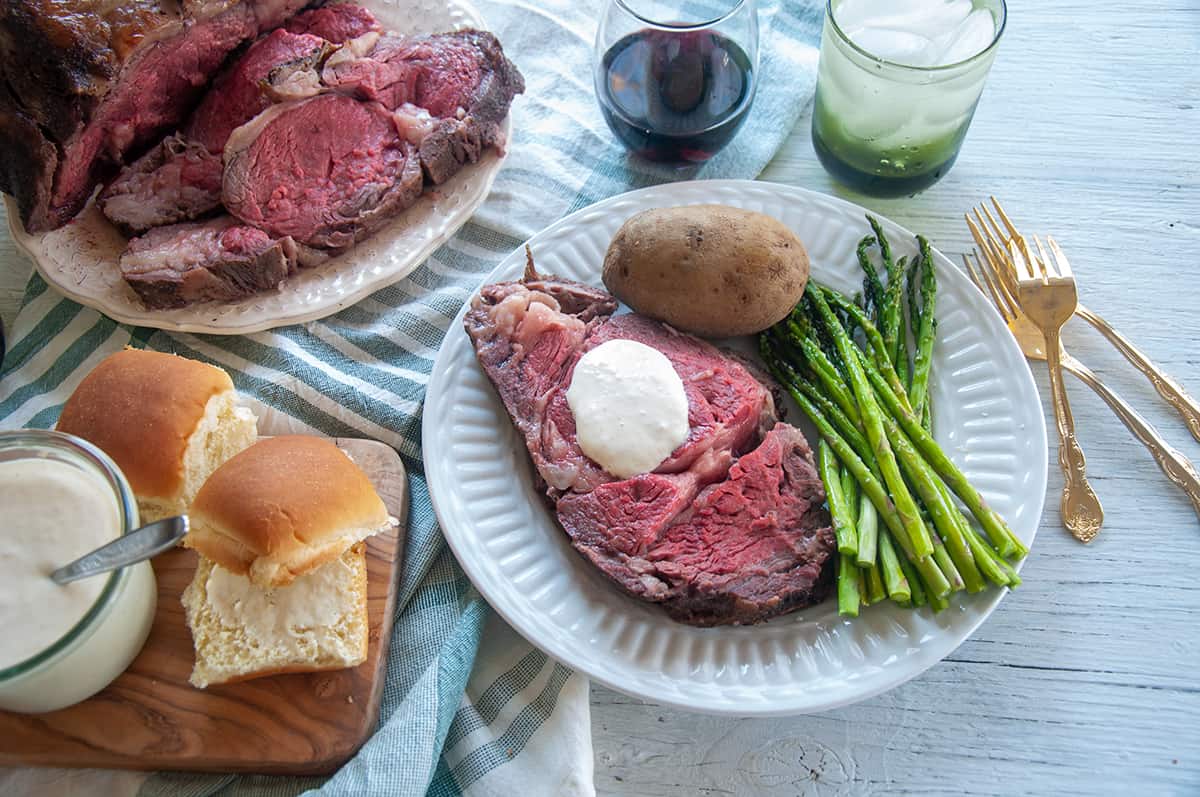
🛠 Products used in this recipe
😋 Did you make this recipe?
That is awesome, and thank you so much for giving this Sous Vide Prime Rib recipe a try. It would be greatly appreciated if you could leave a rating in the comment area below. This lets me know how I am doing and also helps others decide if they want to make this recipe. Most of all, thanks for visiting Ramshackle Pantry.
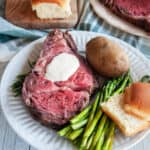
Sous Vide Prime Rib with Horseradish Sauce
- Prep Time: 15 minutes
- Cook Time: 8 hours
- Total Time: 8 hours 30 minutes
- Yield: 6 Servings 1x
- Category: Main Course
- Method: Sous Vide
- Cuisine: American
Description
This Sous Vide Prime Rib recipe is a perfect holiday main course or a great dish for any special occasion. Making this in your Sous Vide guarantees temperature perfection and a delicious, juicy prime rib roast!
Ingredients
- 3-4 rib boneless prime rib (about a 6 pound roast) roast
- 1/2 cup kosher salt
- 1/4 cup pepper
For Horseradish Sauce
- 1 cup mayonnaise
- 1 tablespoon sugar
- 1 tablespoon white vinegar
- 1/4 cup prepared horseradish
Instructions
- Mix salt and pepper
- Cover roast with salt and pepper
- Either add to bag appropriate for warm temps (see note) or sous vide bag
- Either close with a vacuum sealer or displacement method (see notes)
- Sous vide in a large vat of water for 8 hours at 131° Fahrenheit
- While Sous Vide is cooking, make Horsey Sauce (optional)
- Near the end of cooking time, preheat oven to 500° Fahrenheit
- Remove roast from sous vide and remove from bag. Place on roasting pan
- Cook for 20 minutes
- Remove from oven and allow to rest for 15 minutes
- Cut and serve
For Horseradish Sauce:
- Mix all ingredients well
- Put in a covered container and refrigerate for at least 4 hours or until ready to use.
Notes
- Every rib will feed approximately two people, but talk to your butcher about the appropriate size for you. The Prime Rib in this post was 6 lbs(no bone) and fed 6 people well.
- Use a no bone prime rib roast for this recipe. It allows for a better vacuum seal, particularly if you are using the displacement method.
- You can be creative with what you use for both your roast and your cooking vessel. I used a Reynolds Turkey Baking Bag to hold my Turkey and a humongous kettle I use for brewing to cooking it in.
- I call for this recipe to cook for 8 hours. It can be cooked for anywhere between 6 and 12 hours.
- The final temperature of 130 – 135 Fahrenheit is a perfect medium-rare temperature
- Be generous with your salt rub. Remember, every slice will only get a small bit of the outer crust.
Nutrition
- Serving Size: 1/2 lb
- Calories: 296 caloreis
- Sodium: 4554 mg
- Fat: 17 g
- Saturated Fat: 3 g
- Unsaturated Fat: 14 g
- Carbohydrates: 3 g
- Fiber: 1 g
- Protein: 31 g
- Cholesterol: 88 mg







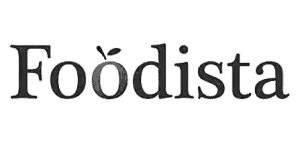


This was a great way to use my sous vide and get consistent temperatures. Our prime rib turned out great.